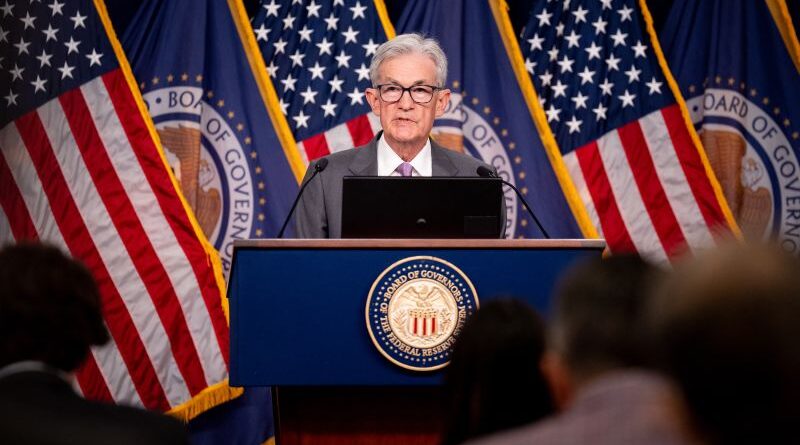Powell recently suggested that interest rates be cut. What everyone wants to know now | CNN Business
Washington
CNN
–
After two difficult years of high inflation and high interest rates, Americans are ready for relief: Federal Reserve President Jerome Powell on Friday gave his strong assurance that a rate cut will come in a month coming. But the size about that vacation is still an open question.
Once the Fed begins to raise its interest rate, which influences the cost of borrowing in the economy, it will mark an important step in the central bank’s historic battle. Price pressures remain under control and the US labor market is operating more slowly these days than in recent years. Data from the Labor Department released this week showed that job growth was much weaker in the 12 months ending in March than previously reported. Unemployment rose again in July to the highest level since October 2021.
That is why the Fed intends to reduce interest rates in September for the first time since 2020. In addition to stabilizing prices, the Fed has also been tasked by Congress to fight for greater employment. Although the US labor market is healthy, economists are not sure whether unemployment will remain stable or continue to rise.
Several Fed officials even considered the possibility of cutting interest rates at last month’s policy meeting, minutes released Wednesday showed, but instead opted to keep rates unchanged. . A “majority” of them said they thought it would be appropriate to start the first rate in September, if the economy turns out as expected.
As central bankers and leading economists gathered this week in Jackson Hole, Wyoming, for the annual symposium hosted by the Kansas City Fed, Powell gave a strong signal to markets in his speech. article on Friday that the first rate hike is coming in a month.
Wall Street has been clamoring for the Fed to cut borrowing costs for a while now. Traders now see a strong opportunity to reduce the speed of jumbo, halving in November, according to the futures market, after the Fed reduced in September for the first time.
Here’s one question on everyone’s mind: How aggressively will the Fed end up cutting rates?
The Fed makes its decisions about interest rates in line with what is happening in the economy. For example, with inflation expected to hit a multi-year target in the summer of 2022, the Fed hiked by half a point and a quarter point in several meetings. During the Great Recession, the Fed often lowered interest rates by three percentage points.
That means there is generally a high threshold for the Fed to act aggressively, either way. And there is a risk of inflation reigniting if the Fed ends up stimulating the economy too much by cutting rates quickly or aggressively. The US economy has been surprisingly high over the past few years.
“They are still worried about another rate of inflation, similar to what we had at the beginning of the year,” Tani Fukui, an economist at MetLife Investment Management, told CNN.
Fed officials have largely indicated they are ready to cut rates, but others have expressed reluctance. Atlanta Fed President Raphael Bostic said recently that “it would be very bad if we start cutting rates and then have to reverse them and raise them.”
Powell recently said that the risk of inflation remaining high and the risk of a weaker-than-expected labor market “have moved into better stability.” In order for the Fed to consider a sharper, half-point rate cut, central bankers will have to see mounting evidence that the labor market is slowing.
“Ultimately, the August jobs report released in early September will determine whether the Fed tapers [by a half point] in September,” Citi analysts said in a note to clients Thursday.
Wall Street is also paying more attention to new claims for unemployment benefits, which is seen as a proxy for the recession and is clearly the first sign of changes in the labor market, Ryan Sweet , a leading US economist at Oxford Economics, said in a recent webinar. for journalists. Sweet believes the Fed is likely to cut rates quarterly next month.
There were 232,000 claims for unemployment benefits last week, a slight increase of 4,000 from the previous revised week, the Labor Department said Thursday. It’s still an all-time low, but records have picked up in recent months. Ongoing claims, filed by people who have received unemployment insurance for at least a week or more, also rose by 4,000 for the week ended August 10, to 1.863 million. Ongoing applications are at their peak through Thanksgiving week 2021.
The government’s upcoming jobs report for August could move the needle. If the data show that employers have added much less than expected, and if unemployment rises further from the current level of 4.3%, that could push the Fed to consider action violent.
But, for now, there is no emergency calling for the Fed to cut rates sharply next month, or any time later in the year. Money is known for its predictability, so if the central bank were to reveal a larger rate than expected, it could create uncertainty in financial markets and raise fears that there is and something is wrong with the US economy.
#Powell #suggested #interest #rates #cut #CNN #Business
